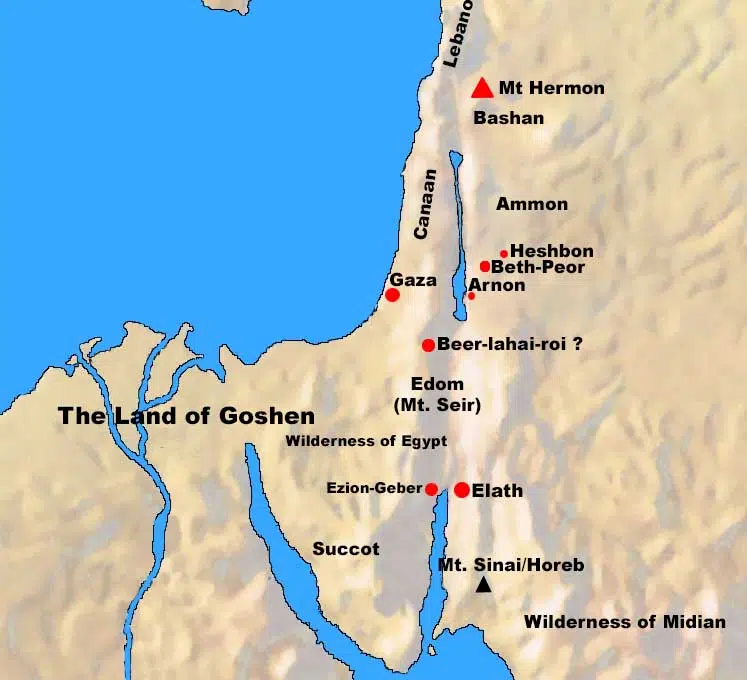The tabernacle and all of its furnishings have now been built along with the two articles that were to be placed in the outer court (the altar of burnt offering and the laver). Now it was time to build the courtyard itself. The courtyard would surround the tabernacle and the outer court.
The specifications for building the tabernacle courtyard were given in Exodus 27:9 – 19.
The altar of burnt offering and the laver have been built. Now, it was time to make the court. First, the boundary needed to be built. The boundary was made of a wooden frame over which curtains were draped. This was like a portable fence.
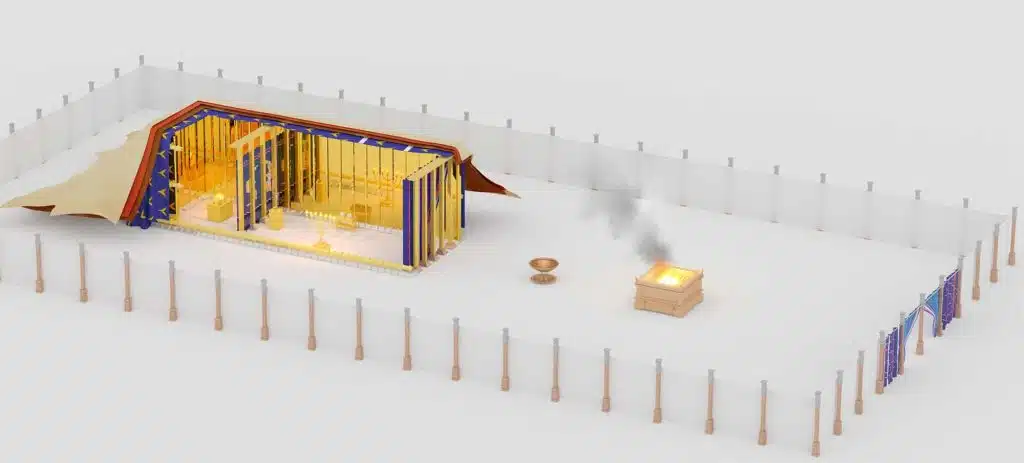
For the south side of the boundary the hangings of the court were of fine twisted linen, one hundred cubits. This would make the south side of the courtyard around 150 feet (45.7 meters) long. The linen was likely made of twisted flax. This is still a fabric in common use.
It was made with twenty pillars, along with their twenty sockets which were made of bronze. The word translated sockets (Heb. “eden”) should probably be considered as the bases for the pillars to rest in. Since the fence was portable, the pillars would not be secured in the ground. Also, the hooks of the pillars and their bands were of silver. These hooks and bands (or “rings”) were used to connect the curtains to the wooden framework.
As with the south side, for the north side there were one hundred cubits; their twenty pillars and their twenty sockets were of bronze, the hooks of the pillars and their bands were of silver. This means that the north side was around 150 feet or 45.7 meters long and had the same bronze bases for the twenty pillars plus the hooks and rings to attach the curtains.
Then, for the west side there were hangings of fifty cubits. This would make the courtyard 75 feet (about 22.8 meters) wide. It consisted of ten pillars and their ten sockets. As with the north and south sides, the hooks of the pillars and their bands were of silver. It was the same for the east side—fifty cubits, which was around 75 feet or 22.8 meters.
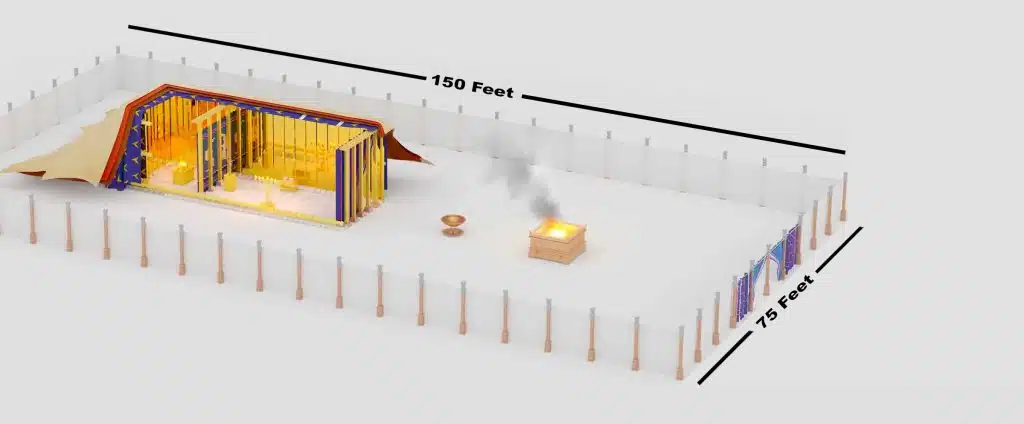
On the east side of the courtyard was the gate into the courtyard. To accommodate the gate, the hangings [or “curtains”] for the one side of the gate were fifteen cubits, with their three pillars and their three sockets [or “bases”]. This was the same for the other side as well. So, on both sides of the gate of the court were hangings of fifteen cubits, with their three pillars and their three sockets. The fifteen cubits equal about 22.5 feet (around 6.8 meters) on each side of the gate, which would have made the gate itself twenty cubits (30 feet or 9.1 meters) wide.
Concerning the curtains, all the hangings of the court all around were of fine twisted linen, like the tabernacle walls (Exodus 26:1), the ephod (Exodus 28:6), and the veil (Exodus 26:31). This probably meant the border curtains were their natural color, or white, since there is no instruction to dye the twisted linen, and the twisted linen appears to have been used as the white thread for the tabernacle.
Verse 17 summarizes the construction of the framework of the courtyard walls. It is a portable, curtained fence that encloses the tabernacle complex.
The sockets for the pillars were of bronze. The sockets refer to the bases of the pillars. They were made of bronze too. The hooks of the pillars and their bands were made of silver. The hooks were used to attach the curtains to the framework, and the bands were probably narrow bands of metal that decorated the pillars. The overlaying of their tops was also made of silver. All the pillars of the court were furnished with silver bands.
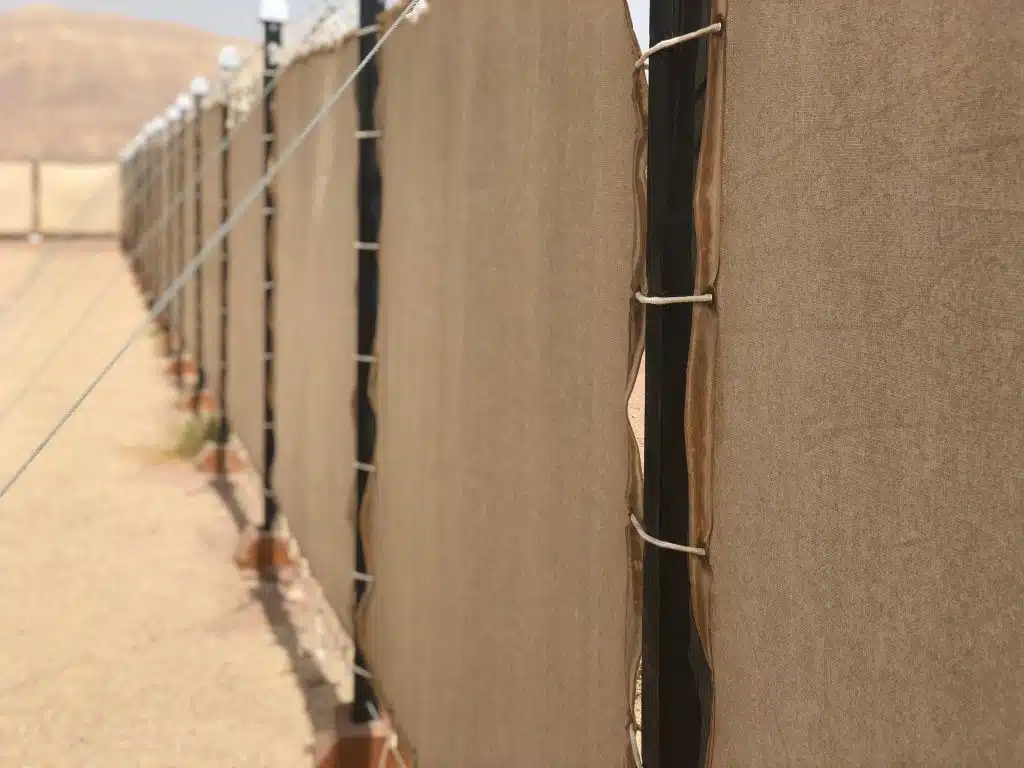
Verses 18 – 19 describe the making of the screen of the gate of the court. It was the work of the weaver, meaning that a fine craftsman made it on a loom. It was made of blue and purple and scarlet material and fine twisted linen. It is likely that the blue and purple and scarlet material was spun and dyed wool, and the white thread was twisted linen. This color pattern and selection of material is the same as that used in the tabernacle (Exodus 26:1). Therefore the screen of the gate of the court was multi-colored while the rest of the border was white.
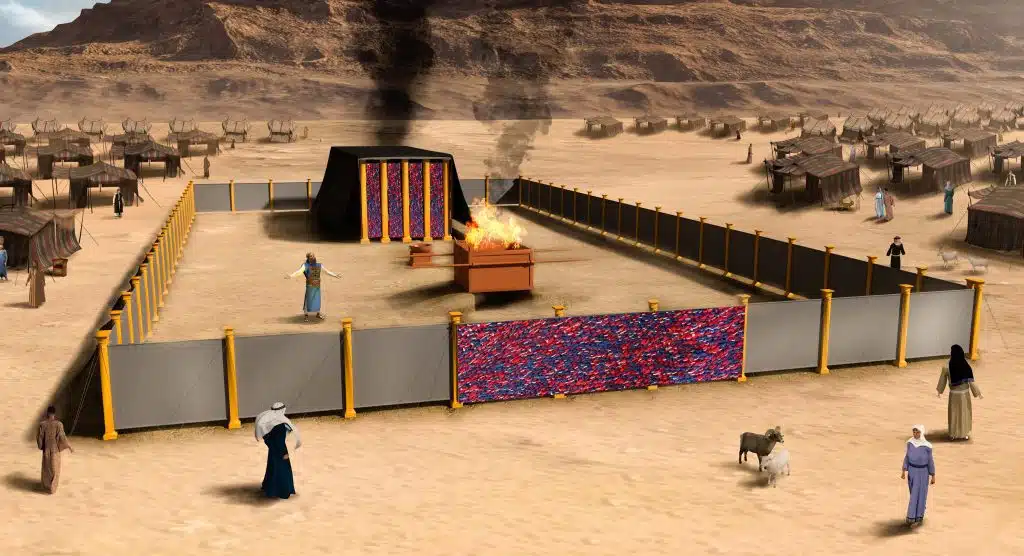
As stated in v. 17, the length of the multi-colored screen of the gate of the court was twenty cubits and the height was five cubits. Thus, the screen would have been about thirty feet (9.1 meters) wide and 7.5 feet (around 2.3 meters) tall, and these measurements were corresponding to the hangings of the court.
Their four pillars and their four sockets were of bronze. The pillars were the “fence posts” and the sockets were the feet on which the “fence posts” rested.
Their hooks were of silver, and the overlaying of their tops and their bands were of silver. For the meaning of hooks and bands, see v. 17 above.
Finally, all the pegs of the tabernacle and of the court all around were of bronze. The pegs were used to secure the tents and hold the tabernacle together (Exodus 27:19; 35:18).
Biblical Text
9 Then he made the court: for the south side the hangings of the court were of fine twisted linen, one hundred cubits; 10 their twenty pillars, and their twenty sockets, made of bronze; the hooks of the pillars and their bands were of silver. 11 For the north side there were one hundred cubits; their twenty pillars and their twenty sockets were of bronze, the hooks of the pillars and their bands were of silver. 12 For the west side there were hangings of fifty cubits with their ten pillars and their ten sockets; the hooks of the pillars and their bands were of silver. 13 For the east side fifty cubits. 14 The hangings for the one side of the gate were fifteen cubits, with their three pillars and their three sockets, 15 and so for the other side. On both sides of the gate of the court were hangings of fifteen cubits, with their three pillars and their three sockets. 16 All the hangings of the court all around were of fine twisted linen. 17 The sockets for the pillars were of bronze, the hooks of the pillars and their bands, of silver; and the overlaying of their tops, of silver, and all the pillars of the court were furnished with silver bands. 18 The screen of the gate of the court was the work of the weaver, of blue and purple and scarlet material and fine twisted linen. And the length was twenty cubits and the height was five cubits, corresponding to the hangings of the court. 19 Their four pillars and their four sockets were of bronze; their hooks were of silver, and the overlaying of their tops and their bands were of silver. 20 All the pegs of the tabernacle and of the court all around were of bronze.
Check out our other commentaries:
-
Hebrews 10:19-22 meaning
We are empowered to live the new resurrected life of Christ through entering God’s presence. Christ is our priest, and He makes our hearts clean...... -
Deuteronomy 26:16–19 meaning
Moses told the Israelites that this covenant renewal was a reminder of their special relationship with Yahweh and their special status among the nations of...... -
Philippians 3:2-7 meaning
Paul warns about teachers who seek to lead the Philippians away from the truth of Christ’s finished work on the cross. These were likely teachers...... -
Matthew 11:7-9 meaning
With John the Baptizer’s disciples leaving the scene, Jesus uses this occasion to begin a conversation about John’s role and hopes that the crowds had...... -
Exodus 24:12-18 meaning
The covenant between the LORD and His people Israel has now been ratified. The LORD summoned Moses to the top of the mountain to receive......



